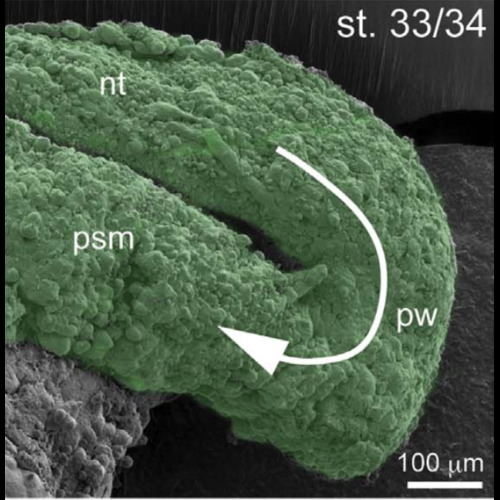The posterior neural plate in axolotl gives rise to neural tube or turns anteriorly to form somites of the tail and posterior trunk.
Classical grafting experiments in the Mexican axolotl had shown that the posterior neural plate of the neurula is no specified neuroectoderm but gives rise to somites of the tail and posterior trunk. The bipotentiality of this region with neuromesodermal progenitor cell populations was revealed more recently also in zebrafish, chick, and mouse. We reinvestigated the potency of the posterior plate in axolotl using grafts from transgenic embryos, immunohistochemistry, and in situ hybridization. The posterior plate is brachyury-positive except for its more anterior parts which express sox2. Between anterior and posterior regions of the posterior plate a small domain with sox2+ and bra+ cells exists. Lineage analysis of grafted GFP-labeled posterior plate tissue revealed that posterior GFP+ cells move from dorsal to ventral, form the posterior wall, turn anterior bilaterally, and join the gastrulated paraxial presomitic mesoderm. More anterior sox2+/GFP+ cells, however, are integrated into the developing spinal cord. Tail notochord is formed from axial mesoderm involuted already during gastrulation. Thus the posterior neural plate is a postgastrula source of paraxial mesoderm, which performs an anterior turn, a novel morphogenetic movement. More anterior plate cells, in contrast, do not turn anteriorly but become specified to form tail spinal cord.

- Dev Biol. 2017 Feb 15;422(2):155-170
- 2017
- Developmental Biology
- 28017643
- PubMed
Enabled by:
